
Welcome to our virtual exhibition, dedicated to the Baltic Sea. Here you will find 13 artworks from 13 different artists, who depicted Baltic Sea in beautiful paintings – in different periods and styles. What connects them all is the love towards the Baltic coast and its landscapes. Explore these works & use the zoom option to see every detail of these paintings – just point the cursor on the artwork. Enjoy!

In the dunes on the Baltic Sea shore
![]() Hermann Seeger (1857–1945)
Hermann Seeger (1857–1945)
Herman Seeger was the 19th-century painter from Halberstadt, Germany. He studied art at the Berlin University of the Arts. Seeger eventually became a successful painter, who was known for his depictions of the Baltic Coast landscapes. Like in this work, German painter often used his daughters Hildegard and Ilse as his models in the beach scenes.
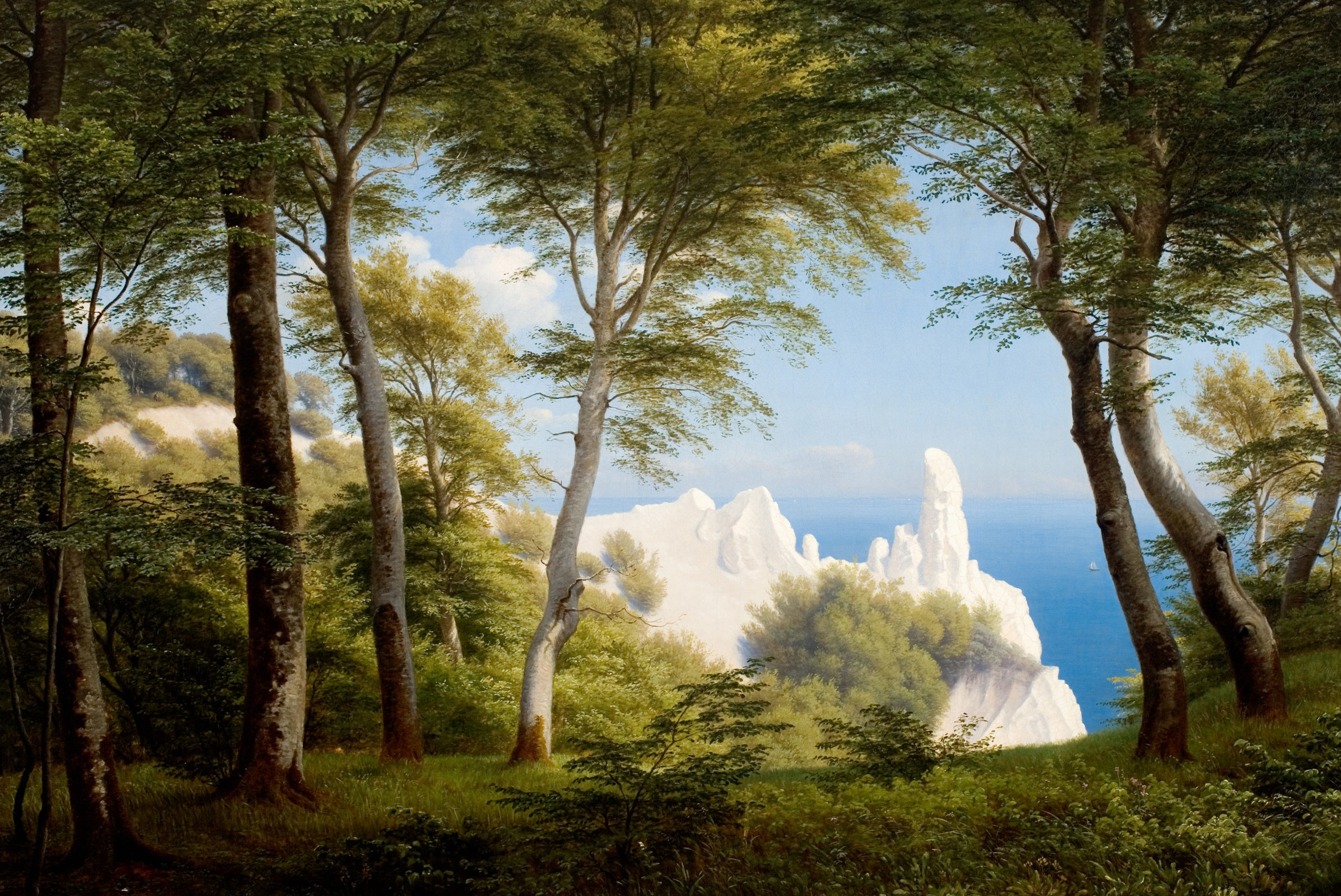
View of the sea from Møns Klint
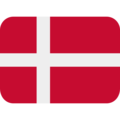 Peter Christian Skovgaard (1817–1875)
Peter Christian Skovgaard (1817–1875)
Skovgaard was one of the 19th-century painters, who is associated with the Golden Age of Danish Painting. Throughout his artistic career, Skovgaard traveled around the country and depicted various Danish landscapes, including the Møns Klint – a chalk cliffs on the Møn island in the Baltic Sea that became a popular subject for the painters. He painted Møns Klint from various angles, but this particular work is the most colorful one.

Sailing boat at sunset on the gulf of Finland
 Ivan Fedorovich Choultsé (1874-1939)
Ivan Fedorovich Choultsé (1874-1939)
This artwork was painted in 1916 by the Russian painter of German origin. He was known for his landscape paintings and the nature elements were always the most important heroes of his works. Choultse depicted the pure beauty of nature – untouched by the presence of the people. That’s why most of his paintings depicted only the sky, snow, water and mountains. Silhouettes of people can be rarely seen in his works and there are no real motif or meaning behind them. Choultse shows you the moment of an untouched beauty.
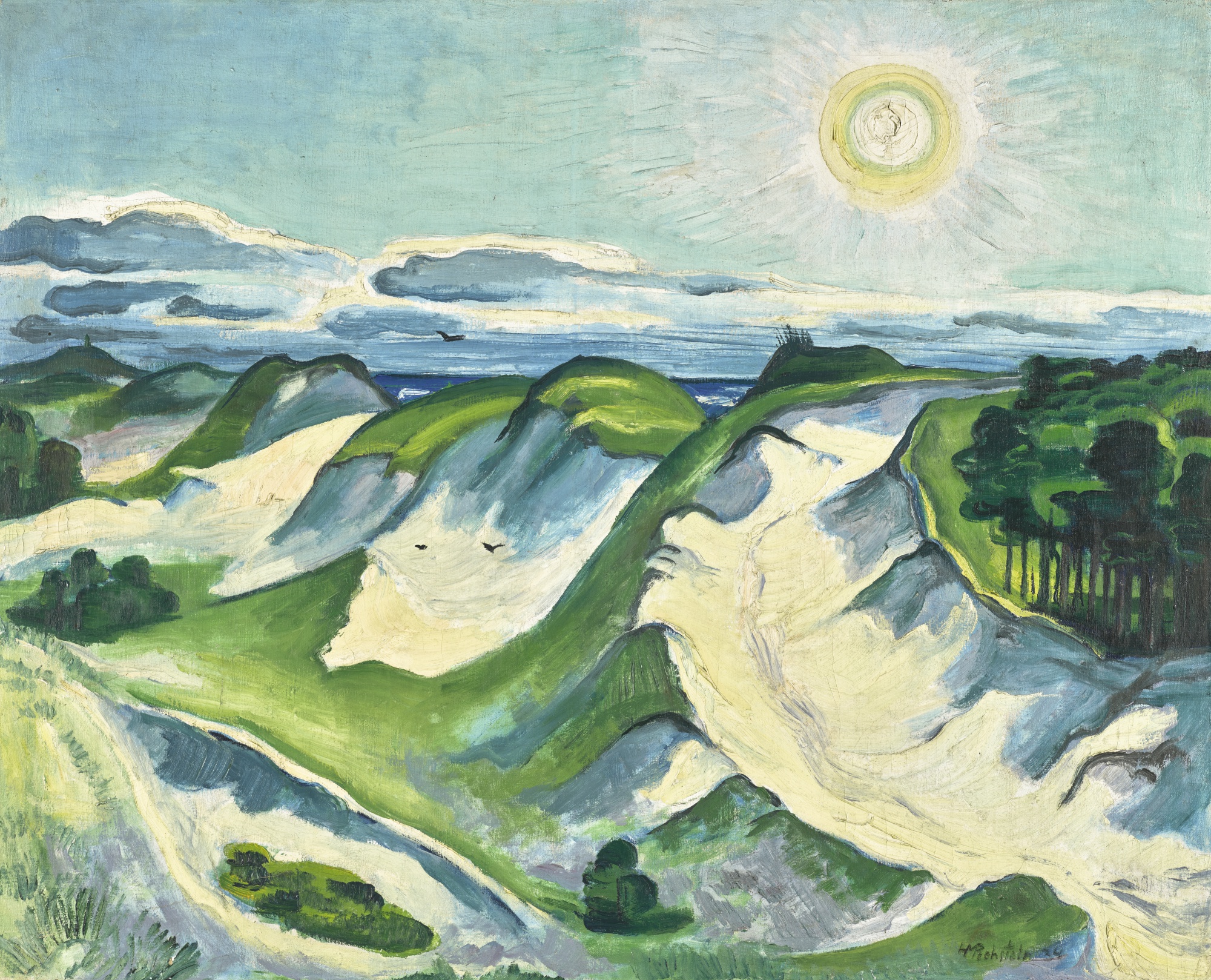
By the Baltic Sea
 Hermann Max Pechstein (1881 – 1955)
Hermann Max Pechstein (1881 – 1955)
Max Pechstein was one of the members of the expressionist artist group Die Brücke. Oppressed by the Nazi regime, German painter moved to a small Pomeranian seaside town Leba in summer of 1934. There he was inspired by the local sights and the Baltic Sea – this led to the creation of this colorful painting. Artist himself truly enjoyed the simple life near the seaside and in Pechstein’s own words – Pomerania was like a fountain of youth for him.
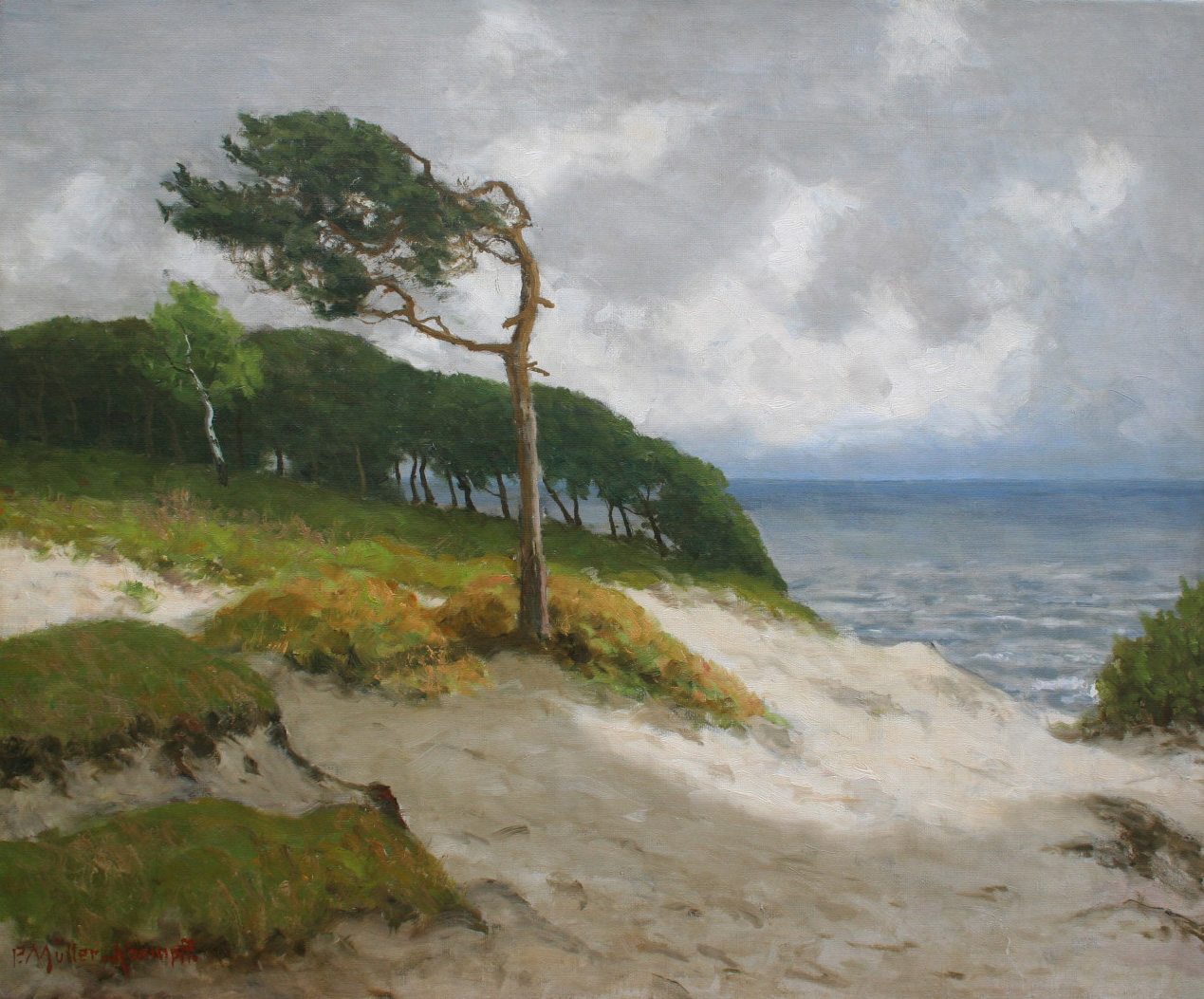
Stormy Baltic Coast at Ahrenshoop
 Paul Müller-Kaempff (1861-1941)
Paul Müller-Kaempff (1861-1941)
German painter Paul Müller-Kaempff was one of the artists, who discovered the small, but cozy fishing village Ahrenshoop in the north of Germany. Mainly thanks to his works, other artists from Germany and abroad started to visit this location and depict Ahrenshoop in their paintings. This particular one depicts the dunes in the beach nearby the village.

Ladies in the sunshine
 Hans Fredrik Gude (1825-1903)
Hans Fredrik Gude (1825-1903)
The famous Norwegian romanticist painter Hans Gude was mainly known for his landscape paintings of his homeland. However, he traveled around Europe, and one of his stops was the German island Rügen that is located in the Baltic Sea. During the period when Gude was the director at the Berlin Academy of Art, he visited Rügen in 1882 & 1883 and painted this work.

Baltic Sea coast on the island of Vilm
 Friedrich Preller the Younger (1838-1901)
Friedrich Preller the Younger (1838-1901)
Same as his father, Friedrich Preller the Younger was a landscape and seascape painter. As many artists of his era, Preller traveled a lot around Germany and foreign countries. One of his trips led him to the Vilm island – a tiny island in the Baltic Sea. There he painted this artwork in 1888.

Fishermen’s village in Haapsalu
 Julius Sergius von Klever (1850-1924)
Julius Sergius von Klever (1850-1924)
Born in Dorpat (now Tartu), Julius von Klever painted a lot of landscapes around the Estonia and other parts of the Russian Empire. This particular painting was painted in 1897 and it depicts a small, quiet village of fishermen nearby the Estonian town of Haapsalu that is historically known as a seaside resort with its mud cure facilities.

Without land. Pomeranians driven by the Germans to the Baltic Islands
 Wojciech Gerson (1831-1901)
Wojciech Gerson (1831-1901)
Painted in 1888, this painting by the Polish Romanticism painter Wojciech Gerson depicts a symbolic expulsion of the Pomeranian tribe in the 11th-century. You can see the saddened and frightened people in the boats, who are heading to their new homes in the Baltic Sea. Unlike the other paintings in this exhibition, Gerson’s work is more of a historical rather than just a simple depiction of the Baltic landscape.

A Summer Day on the Coast at Gotland
 Leopold Otto Strützel (1855-1930)
Leopold Otto Strützel (1855-1930)
German painter studied arts in the Arts Academy of Düsseldorf, but later on, he spent most of his days in Munich, Bavaria. However, he occasionally traveled to other countries, and in this painting, Strützel painted the Saint Georg church in Visby, Sweden. His visit to the island of Gotland was in 1892, so this painting was created shortly after that. Strützel had a productive career, he painted more than 750 works.

The rocky coast of Helligdomsklipperne, Bornholm Island
 Peder Mørk Mønsted (1859-1941)
Peder Mørk Mønsted (1859-1941)
Mønsted was born in an upper-class family. From 1875 to 1879, he studied in the Royal Danish Academy of Fine Art. Later in his career, Mønsted traveled and worked in Africa & Southern Europe. His works were praised by the contemporaries for their mix of Realism & Romanticism. This particular artwork by the Danish painter was painted in 1882 after he visited the island of Bornholm in the Baltic Sea.
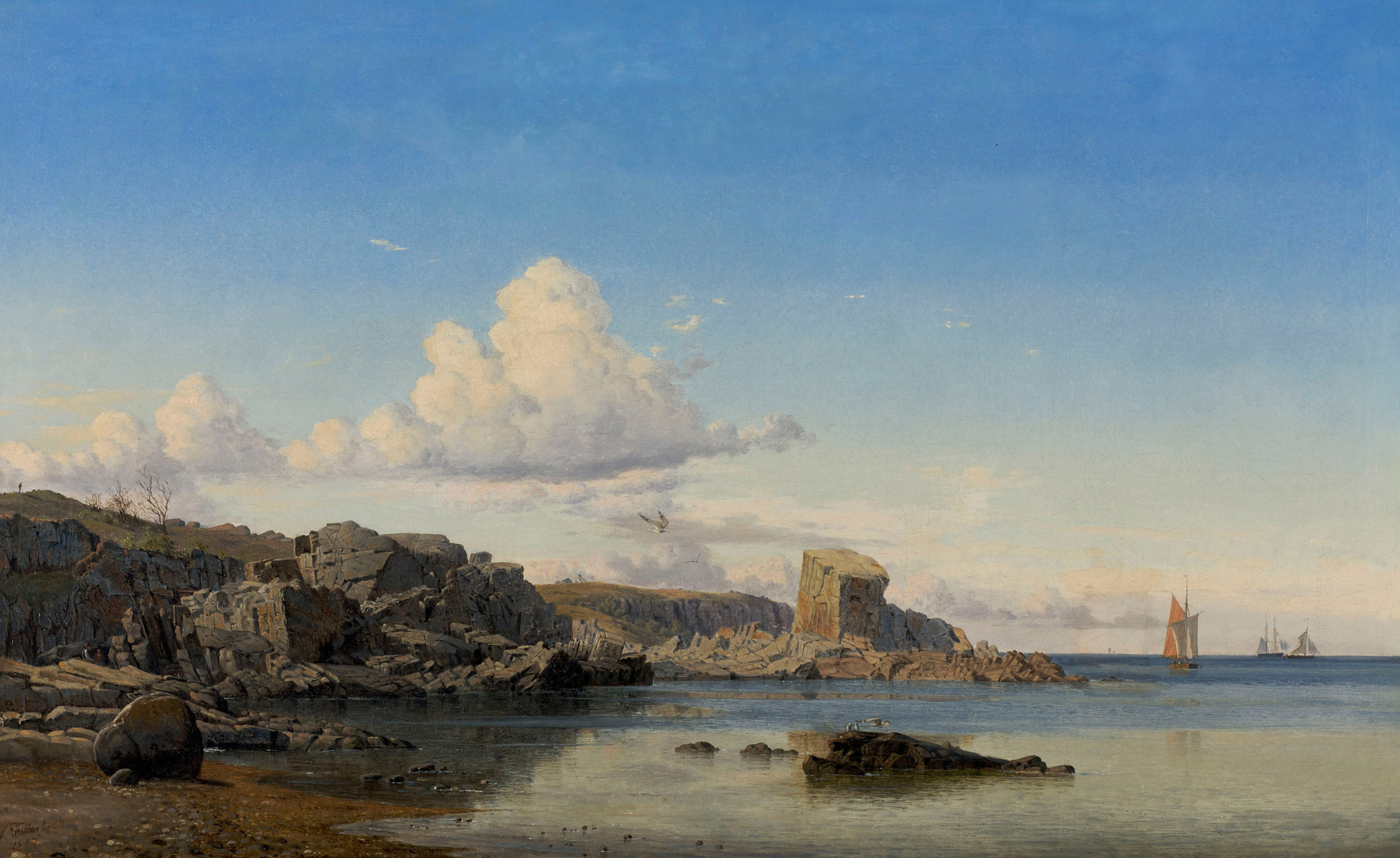
Randcleven at Gudhjem on the eastcoast of Bornholm
 Viggo Fauerholdt (1832-1883)
Viggo Fauerholdt (1832-1883)
Born in Denmark, Fauerholdt studied in the Royal Danish Academy of Fine Art (1846-1852). He specialized in the landscape paintings, and particularly – in seascapes. He painted ships sailing in the open sea and coastal harbors as well. This painting was created in 1857, and it depicts the rocky beach of Bornholm Island. As you can see in this work, Fauerholdt paid great attention to the detail of the scene, as the best artists of the Realism style period did.

View of the fishing village Sletten. The Brisk gale
 Frederik Christian Kiærskou (1805-1891)
Frederik Christian Kiærskou (1805-1891)
This beautiful painting was created by the Danish landscape painter in 1882 and it depicts a small fishing village nearby the stormy coast of the Baltic Sea. Its scenery was one of the favorite motifs for the Kiærskou, who often painted the coastal scenery – with attention to details and warm colors. He found his inspiration in the works of his compatriot – 18th-century Danish Romanticism painter Johan Luwdig Lund.
